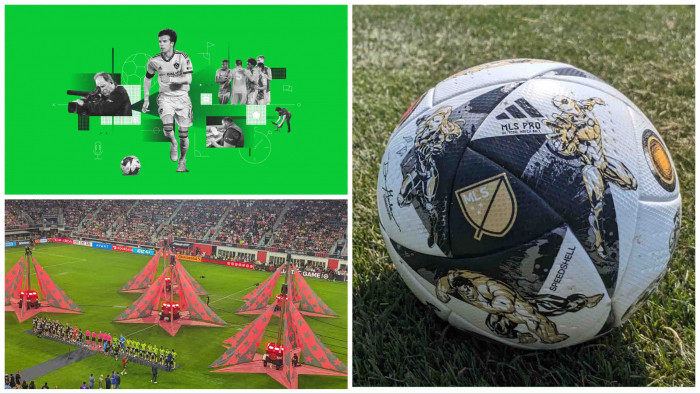Gymnastics is a complex event (we're guessing) involving a mix of grace, strength and a total lack of respect for one's own well being. Fortunately you're unlikely to injure yourself watching The Horse from your sofa. These details will make that experience more fulfilling. As will crisps.
When? Artistic gymnastics 5-11, 14-16 August 2016 (rhythmic gymnastics 19-21)
Golds up for grabs: 18 (Artistic), 2 (Rhythmic)
Olympic presence: Men: Artistic since 1896; trampoline since 2000. Women: Artistic 1928–48 and since 1952; rhythmic since 1984; trampoline since 2000.
Olympic Format: men’s and women’s events in artistic gymnastics and trampoline. Rhythmic gymnastics is for women only.
Past Champions: USSR /Russia: 90 | Japan: 29 | USA : 33
..........................................................................................................................................................
The basics
Artistic Gymnastics
There are four disciplines in women’s artistic gymnastics and six in men’s. Two of the disciplines – the vault and the floor exercise – are contested by both genders. Women also compete in uneven bars and beam. Men add pommel horse, rings, high bar and parallel bar. The Olympic programme consists of three competitions for each gender: team, individual all-round and individual apparatus.
Qualification for the finals is determined by qualifying rounds in which five of the six competitors from each team perform on each piece of apparatus, and their scores are used to determine qualification for the individual all-round and apparatus finals as well as the team final. Scores from the preliminary round are not carried forward – competitors start each final with a clean slate.
In the team final, three gymnasts from each team compete on each piece of apparatus, and their scores contribute to their team’s points total. A maximum of two competitors per nation take part in the individual all-round final, in which each contestant performs on all pieces of apparatus, with their cumulative scores determining their finishing positions. A maximum of two gymnasts per nation also qualify for the individual apparatus final, which is contested by the eight gymnasts who scored highest on each piece of apparatus in the qualifying round.
In all the exercises, pay particular attention to the form of the gymnasts: limbs should be straight, toes should be pointed and there should be a general air of tightness about the body. Height is particularly important in airborne manoeuvres, as are perfect landings.
The vault
There are several stages to a vault. A typical routine is the Yurschenko (pictured, below). In this, the gymnast sprints down a 25m runway and performs a handspring at the end, propelling themself towards the springboard in such a way that they land on it feet first, facing back in the direction they came from. During the spring, they do another half rotation to ensure that they land on the vaulting table in a hands-down position. During their brief contact with the table, they push downwards, which sends them still higher. This action, plus the forward momentum generated by their run-up, launches them into the flight phase, during which they perform a combination of twists and/or somersaults, before (hopefully) landing neatly on both feet.
Prior to 2001, vaulting involved a canvas-covered ‘horse’ set at right angles to the runway for women and parallel for men. This has now been replaced by a more stable vaulting table 1.2m long and 95cm wide. It is set at a height of 1.25m for women and 1.35m for men. Gymnasts perform two vaults; only the one receiving the higher marks counts towards their score.
Floor exercise
In some ways the floor exercise is ‘freer’ than the other disciplines in artistic gymnastics – it’s the competitors doing what they can with their bodies on a 12 x 12m mat set on top of a sprung floor. Women’s routines are longer – 70–90 seconds as against 60–70 seconds for the men – and are accompanied by music, whereas the men’s are not. The differences are revealing: women are expected to incorporate dance-like movements into their routines, whereas the emphasis in the men’s version of the discipline is on strength. Competitors must use the whole area of the mat.
The most spectacular elements of floor routines are the tumbling passes, which consist of a variety of somersaults, twists, handsprings and cartwheels performed in succession. The top women typically get four or five passes into their routines; the men rarely manage more than four because of the shorter time allotted to them.
Uneven bars (women only)
This dramatic apparatus consists of two parallel bars made of wood-sheathed fibreglass set at different heights (1.61m and 2.41m above the ground) and separated by a gap of between 130cm and 180cm (adjustible in 2cm increments to suit individual competitors). Back in the 1950s, gymnasts basically clambered between the bars, albeit gracefully. Now they fly around at scarcely believable speeds. To comply with Olympic specifications, a routine must include one aerial manoeuvre from the lower bar to the higher bar, one in the reverse direction and one which starts and finishes on the same bar. Competitors must also perform at least one handstand turn.
Beam (women only)
Many of us would strugg le to even walk along a 5m strip of wood 10cm wide and 1.25m above the floor. The best Olympic gymnasts leap around on it as if they were performing on a piece of apparatus ten times wider. This discipline is all about courage, confidence and elegance. Competitors have a maximum of 90 seconds to impress the judges, during which time they must perform a variety of jumps, turns and balancing postures. They must also use the entire length of the beam.
Pommel horse (men only)
The military roots of the pommel horse are clear: essentially you are watching cavalrymen showing off on their stationary mounts. The ‘horse’ is a leather-covered structure 1.6m long and 35cm wide, with a top surface 1.15m above the ground. The pommels are a pair of 12cm high upward-standing ‘D’ handles set each side of the centre of the top of the horse. The first commandment for gymnasts performing on the horse is not to touch the apparatus with their legs. Instead, they move around its surface (they must use all three sections) on their hands, while constantly swinging their legs, which sometimes are separated scissor-style – flairs – and at other points are held together and moved in a circular or pendulum fashion. When circling his legs above the horse, the gymnast must lift his hands with immaculate timing to allow the limbs to pass. Pommel routines end with a dismount, which must involves the gymnast dropping to the ground after a handstand.
'Extracted from How to Watch the Olympics by David Goldblatt & Johnny Acton (Profile Books)'
(Images: Rex Features)
Latest
Related Reviews and Shortlists










